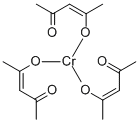SUNFLOWER SEED OIL
Synonym(s):Helianthi annui oleum raffinatum;Sunflower seed oil from Helianthus annuus
- CAS NO.:8001-21-6
- Empirical Formula: NULL
- Molecular Weight: 0
- MDL number: MFCD00132403
- EINECS: 232-273-9
- SAFETY DATA SHEET (SDS)
- Update Date: 2025-12-17 09:49:34
What is SUNFLOWER SEED OIL?
Chemical properties
Pale-yellow, semidrying oil; mild taste; pleasant odor. Soluble in alcohol, ether, chloroform, and carbon disulfide. Combustible.
Chemical properties
Sunflower oil occurs as a clear, light yellow-colored liquid with a bland, agreeable taste.
The Uses of SUNFLOWER SEED OIL
sunflower seed oil is expressed from sunflower seeds.
The Uses of SUNFLOWER SEED OIL
Modified alkyd resins, soap, edible oil, margarine, shortening, dietary supplement.
The Uses of SUNFLOWER SEED OIL
sunflower oil (Helianthus annuus) is commonly used as a carrier oil, it softens and smooths the skin. Sunflower oil has a high linoleic acid and other essential fatty acid content. In addition, it contains lecithin, carotenoids, and waxes. This oil is considered a non-comedogenic raw material.
The Uses of SUNFLOWER SEED OIL
Sunflower Oil is a highly polyunsaturated oil obtained from sunflower seeds. There are two types of sunflower grown: an oilseed type used as a vegetable oil, and a nonoilseed type used for human food and bird seed. The composition of sunflower oil varies according to location and growing temperature. In general, sunflowers grown above the 39th parallel are high in linoleic acid and those grown below are high in oleic acid. The high linoleic variety is used for margarine and salad oil, while the high oleic variety is used in frying applications. This bland-flavored oil has a smoke point of 485–490°f (252–254°c) which gives it utility in baking, cooking, and frying foods. It is also used as a salad oil. In the hydrogenated form, it is used in margarine and shortenings.
What are the applications of Application
Sunflower seed oil is a mixture of saturated, monounsaturated, and polyunsaturated fatty acids
Production Methods
Sunflower oil is obtained from the fruits and seeds (achenes) of the sunflower, Helianthus annus (Compositae), by mechanical means or by extraction.
Definition
Extractives and their physically modified derivatives. It consists primarily of the glycerides of the fatty acids linoleic and oleic.
General Description
Sunflower seed oil from Helianthus annuus contains saturated fatty acids (palmitic and stearic acids), monounsaturated fatty acid (oleic acid), and polyunsaturated acid (mostly linoleic acid). In addition, this edible oil also contains nonglyceridic contents including tocopherols and plant sterols, and is rich in vitamins and minerals.
Pharmaceutical Applications
Sunflower oil is widely used as an edible oil, primarily in
oleomargarine. It is also used extensively in cosmetics and
pharmaceutical formulations.
Therapeutically, sunflower oil is used to provide energy and
essential fatty acids for parenteral nutrition. Studies have shown
that sunflower oil may be used in intramuscular injections without
inducing tissue damage.
Biochem/physiol Actions
Sunflower seed oil is one of the most used vegetable oils in human nutrition. Oilseed crop sunflower (Helianthus annuus) is also used for biodiesel production. Sunflower oil is used as an emollient in cosmetics, and it serves as an effective phenolic antioxidant. Phytosterols in sunflower oil help in regulating the cholesterol levels in the body. Therefore, sunflower oil may be used to treat pathological conditions such as like acne, arthritis, and hair damage.
Safety
Sunflower oil is widely used in food products and on its own as an edible oil. It is also used extensively in cosmetics and topical pharmaceutical formulations, and is generally regarded as a relatively nontoxic and nonirritant material.
Storage
Sunflower oil should be stored in an airtight, well-filled container, protected from light. Stability may be improved by the addition of an antioxidant such as butylated hydroxytoluene.
Incompatibilities
The oxidative stability of sunflower oil is reduced in the presence of
iron oxides and zinc oxide.
Sunflower oil forms a ‘skin’ after being exposed to air for 2–3
weeks.
Regulatory Status
GRAS listed. Included in nonparenteral medicines licensed in the UK.
Properties of SUNFLOWER SEED OIL
| Density | 0.9 g/mL at 25 °C(lit.) |
| refractive index | n20/D1.475 |
| Flash point: | >110℃ |
| storage temp. | room temp |
| solubility | Miscible with benzene, chloroform, carbon tetrachloride,
diethyl ether, and light petroleum; practically insoluble in
ethanol (95%) and water. |
| form | neat |
| Odor | at 100.00 %. orris oily woody waxy spicy floral dusty acacia |
| EPA Substance Registry System | Sunflower oil (8001-21-6) |
Safety information for SUNFLOWER SEED OIL
| Signal word | Warning |
| Pictogram(s) |
 Exclamation Mark Irritant GHS07 |
| Precautionary Statement Codes |
P262:Do not get in eyes, on skin, or on clothing. |
Computed Descriptors for SUNFLOWER SEED OIL
SUNFLOWER SEED OIL manufacturer
New Products
4,4-Difluoropiperidine hydrochloride tert-butyl 9-methoxy-3-azaspiro[5.5]undecane-3-carboxylate Indole Methyl Resin N-Isopropylurea N,N-Dicyclohexylcarbodiimide(DCC) MELDRUMS ACID 5-METHYLISOXAZOLE-4-CARBOXYLIC ACID Magnessium Bis glycinate Zinc ascorbate 1-bromo-2-butyne 2-acetamidophenol 9(10H)-anthracenone Erythrosin B, 4-Piperidinopiperidine 2-((4-morpholinophenylamino) (methylthio) methylene) malononitrile 2,4-dihydroxybenzaldehyde 3-(4-morpholinophenylamino)-5-amino-1H-pyrazole-4-carbonitrile Methyl 2-methylquinoline-6-carboxylate 2,6-dichloro-4-nitropyridine 4-Bromo-2-chlorobenzonitrile 2-(benzylamino)acetic acid hydrochloride 4-(tert-Butoxycarbonylamino)but- 2-ynoic acid 3,4-dihydro-2H-benzo[b][1,4]dioxepine 1-Phenyl-1-cycloprppanecarboxylicacidRelated products of tetrahydrofuran








You may like
-
 8001-21-6 98%View Details
8001-21-6 98%View Details
8001-21-6 -
 Sunflower seed oil, analytical standard CAS 8001-21-6View Details
Sunflower seed oil, analytical standard CAS 8001-21-6View Details
8001-21-6 -
 Sunflower oil CAS 8001-21-6View Details
Sunflower oil CAS 8001-21-6View Details
8001-21-6 -
 Sunflower seed oil, from helianthus annuus CAS 8001-21-6View Details
Sunflower seed oil, from helianthus annuus CAS 8001-21-6View Details
8001-21-6 -
 Sunflower oil CAS 8001-21-6View Details
Sunflower oil CAS 8001-21-6View Details
8001-21-6 -
 Sunflower seed oil from Helianthus annuus CAS 8001-21-6View Details
Sunflower seed oil from Helianthus annuus CAS 8001-21-6View Details
8001-21-6 -
 Sunflower seed oil CAS 8001-21-6View Details
Sunflower seed oil CAS 8001-21-6View Details
8001-21-6 -
 20677-73-0 (2,2-diethoxyethyl)methylamine 98%View Details
20677-73-0 (2,2-diethoxyethyl)methylamine 98%View Details
20677-73-0
